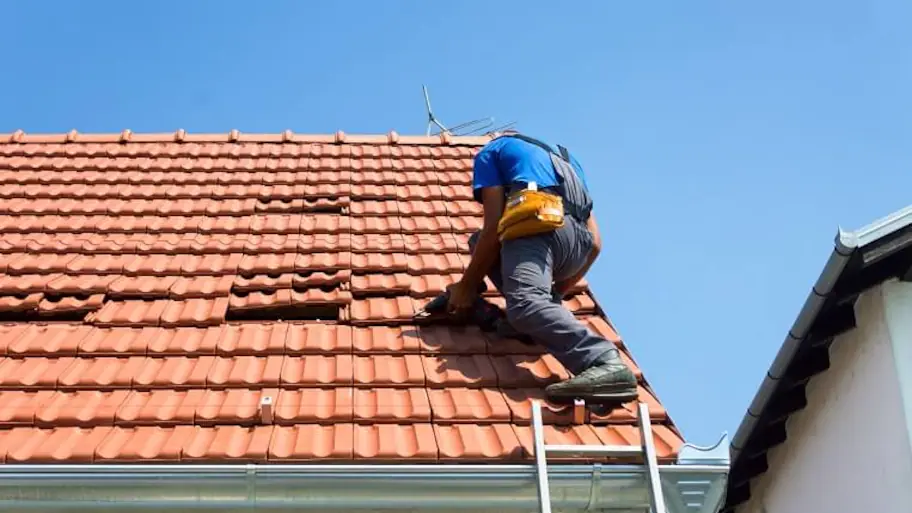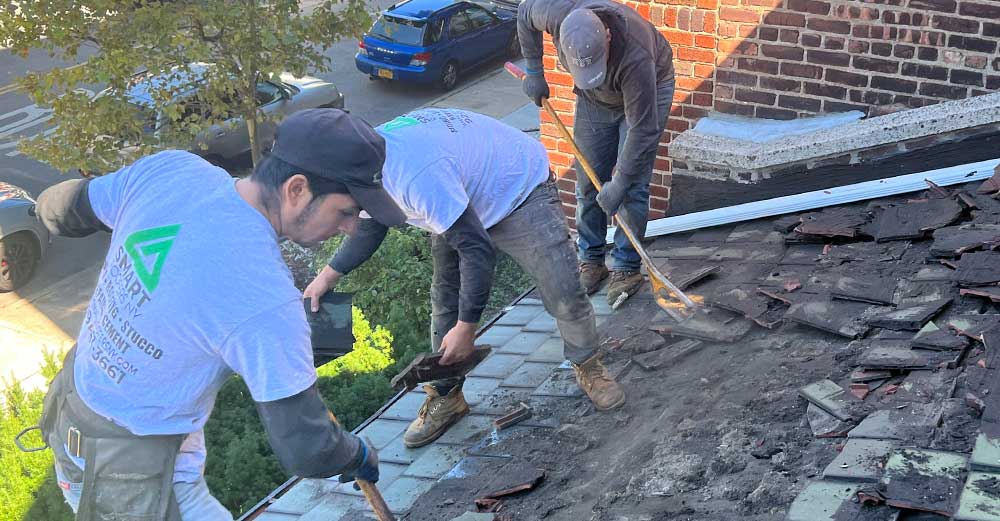Roofing Companies Oahu: Trusted Experts for Your Roofing Demands
Roofing Companies Oahu: Trusted Experts for Your Roofing Demands
Blog Article
Comprehending the Different Kinds Of Roofing Systems: A Comprehensive Overview for Homeowners
With a variety of choices-- varying from the standard gable to the contemporary level-- each type provides one-of-a-kind benefits and difficulties that need to align with the house owner's ecological considerations and certain needs. As we discover the details of numerous roofing kinds, it comes to be apparent that one dimension does not fit all; the best choice might shock you.
Saddleback Roof
Saddleback roofs, identified by their triangular form, are among one of the most prominent roof covering designs due to their simplicity and efficiency in losing water and snow. This design includes two sloping sides that meet at a ridge, allowing for efficient water drainage and reducing the threat of water accumulation. The high pitch generally connected with gable roof coverings enhances their ability to deal with heavy precipitation, making them ideal for numerous environments.
In addition to their practical advantages, saddleback roofs use visual convenience. They can be adjusted to different building designs, from typical to modern homes. The layout can also accommodate added functions such as dormer home windows, which enhance all-natural light and air flow in the attic room room.
Additionally, gable roofings offer adequate area for insulation, contributing to energy effectiveness. Home owners can select from a selection of roof materials, including asphalt shingles, metal, and floor tiles, better enhancing personalization options.
Despite their advantages, saddleback roofs may require added assistance in locations prone to high winds or hefty snowfall. Generally, the saddleback roof stays a favored selection because of its blend of functionality, toughness, and visual allure.
Flat Roofs
Level roof coverings are typically acknowledged for their minimalist layout and practical applications, particularly in industrial and commercial settings (oahu roofing). These roofs feature a horizontal or almost straight surface, which permits very easy building and construction and versatile room application. While they might lack the visual appeal of angled roofs, flat roofing systems offer numerous advantages, particularly in urban environments where making the most of space is critical
One of the key benefits of level roofings is their ease of access. Homeowners can utilize the roof covering room for various purposes, such as rooftop gardens, balconies, or photovoltaic panel installations. Additionally, flat roofings are generally much more cost-efficient to maintain and mount compared to their sloped equivalents, as they call for less products and labor.
However, flat roofs do present specific obstacles. Proper drainage is important to stop water pooling, which can cause leakages and structural damages. Hence, choosing high-quality waterproofing materials and routine evaluations are critical for guaranteeing durability. Typical products utilized for level roofings include built-up roof (BUR), modified bitumen, and single-ply membranes, each offering distinct advantages. Overall, flat roofs work as a useful and versatile option for lots of property owners and companies alike.
Hip Roofing Systems
Hip roofs are identified by their sloped sides that merge at the top, creating a ridge. This design stands out from saddleback roofs, as all 4 sides of a hip roofing incline downwards towards the wall surfaces, giving an extra steady structure. The angle of the inclines can differ, allowing for flexibility in building aesthetics and functionality.
Among the key benefits of hip roofings is their capacity to endure hefty winds and unfavorable weather. The sloped surface areas make it possible for much better water drain, minimizing the risk of leaks and water damage. In addition, hip roofing systems provide increased attic space, which can be utilized for storage space and even converted right into comfortable areas.
However, building a hip roofing can be more complicated and pricey than simpler roof covering kinds, such as saddleback roofs. The extra material and labor entailed in developing the inclines and guaranteeing appropriate architectural integrity can cause higher expenditures. Regardless of these drawbacks, lots of home owners favor hip roof coverings for their durability, visual charm, and potential for energy efficiency.
Mansard Roof Coverings
Mansard roofing systems, often acknowledged by their unique four-sided layout, function 2 inclines on each side, with the lower incline being steeper than the upper. This architectural style, stemming from France in the 17th century, is not just visually appealing but practical, as it takes full advantage of the functional room in the upper floorings of a building. The high reduced incline allows for even more clearance, making it an ideal choice for attic rooms or lofts, which can be exchanged living spaces.
Mansard roof coverings are defined by their adaptability, accommodating various building styles, from conventional to modern. They can be constructed with various materials, consisting of asphalt tiles, slate, or steel, offering home owners with a series of options Discover More Here to fit their spending plans and choices. Additionally, the style permits the combination of dormer windows, enhancing natural light and air flow in the upper degrees.
Nonetheless, it is necessary to think about the prospective drawbacks. Mansard roofing systems may need more maintenance as a result of the complexity of their design, and their high slopes can be testing for snow and rain drainage. Generally, mansard roofings incorporate elegance with practicality, making them a prominent option among homeowners looking for unique building features.
Dropped Roofing Systems
As property owners increasingly seek simpleness and functionality in their architectural designs, dropped roof coverings have actually arised as a popular choice. Identified by a solitary sloping airplane, a shed roofing system presents a minimal aesthetic that matches different home designs, from modern to rustic.
One of the key advantages of a shed roof covering is its uncomplicated building, which commonly equates to lower labor and material expenses. This design permits efficient water drain, lowering the threat of leaks and water damage. Furthermore, the vertical slope supplies ample area for skylights, improving natural light within the inside.
Dropped roofs likewise provide adaptability in regards to usage. They can be effectively integrated right into enhancements, garages, or outside frameworks like sheds and structures. In addition, this roofing system style can suit different roof covering products, including metal, asphalt roof shingles, or also green roofing systems, lining up with eco-friendly initiatives.
Nonetheless, it is essential to consider local climate problems, as hefty snow loads may necessitate adjustments to the roof covering's angle or framework. Overall, dropped roofing systems present a practical and cosmetically pleasing option for house owners wanting to maximize functionality without compromising design.
Conclusion


Gable roofings, identified by their triangular shape, are amongst the most preferred roof covering styles due to their simplicity and effectiveness in shedding water and snow. oahu roofing. The steep pitch frequently linked with gable roofs improves their ability to deal with heavy precipitation, making them suitable for various climates
While they might lack the aesthetic allure of pitched roofings, flat roofing systems offer various advantages, specifically in city atmospheres where making the most of area is vital.

Report this page